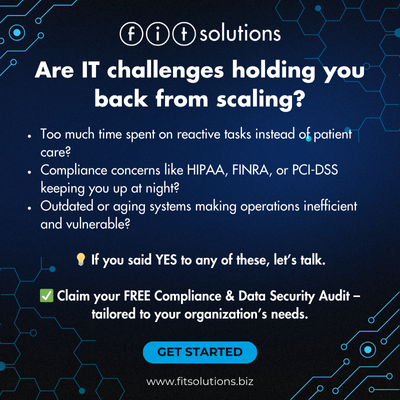By Steve Moran
Failures and fraud and malfeasance are inevitable in all industries … I guess …
Over the last number of months, perhaps the last year, I have watched with alarm and embarrassment news story after news story of senior living communities, where …
- The operators filed for bankruptcy, causing great monetary and emotional distress to residents, family members, and team members.
- There have been allegations of serious abuse or neglect of residents …
- There have been allegations of gross mistreatment of team members.
Is the Problem Real?
While doing deep research on this topic is beyond the scope of Foresight, I went to OpenAI (ChatGPT) and asked for help.
Here is what I got (normally I would not cut and paste from an AI source, but this is helpful, and it is important to remember that what AI thinks is important is what humans think is important):
There is a clear and concerning trend of financial distress within the senior living industry, encompassing assisted living facilities, nursing homes, and continuing care retirement communities (CCRCs). This distress has led to increased bankruptcies, facility closures, and significant impacts on residents, families, and staff.
📉 Financial Distress and Bankruptcies
In 2024, senior care operators accounted for approximately 23% of healthcare-related Chapter 11 bankruptcy filings, with 11 filings noted — the fewest since 2021. Despite a slight decline from previous years, the sector remains under significant financial pressure. The healthcare distress index reached a record high in the second quarter of 2024, indicating ongoing challenges. (Senior Care Operators Accounted For 23% Of Health Care Entity …, Senior Living Bankruptcy Trend Remains Alarming – Reg’s Blog)
🏚️ Facility Closures and Reduced Access
Between February 2020 and July 2024, at least 774 nursing homes closed, displacing over 28,000 residents. Factors contributing to these closures include economic pressures, workforce shortages, and policy changes. Notably, 46% of nursing homes have limited new admissions, and 57% have waiting lists, exacerbating access issues. (New AHCA Report Shows Alarming Trends in Nursing Home Access, Report: Access to Nursing Home Care is Worsening – AHCA/NCAL)
💸 Impact on Residents and Families
Financial instability has directly affected residents. For example, an 84-year-old veteran was forced to leave her senior living community after monthly fees increased from $1,395 to $6,500 following a change in ownership. Similarly, residents of Harborside in New York lost a significant portion of their entrance fee refunds due to the facility’s bankruptcy and subsequent sale. (Veteran, 84, forced to sell ‘dream’ home after monthly fees skyrocked to $6,500 as she warns ‘your money is not safe’, New York Senior-Care Residents to Lose Fee Refunds Under Bankruptcy Sale)
⚠️ Contributing Factors
Several factors contribute to the financial challenges in the senior living industry:
- Labor Shortages: Ongoing staffing challenges have led to increased operational costs and limited capacity. (Report: Access to Nursing Home Care is Worsening – AHCA/NCAL)
- Inflation and Rising Costs: Inflationary pressures have increased expenses for facilities, impacting profitability.
- Private Equity Ownership: The acquisition of senior living facilities by private equity firms has, in some cases, led to cost-cutting measures that affect care quality.
🔍 Outlook and Considerations
While some indicators suggest a potential stabilization, such as improving occupancy rates and a slight decrease in bankruptcies, the industry continues to face significant challenges. Stakeholders, including policymakers and industry leaders, are urged to address these issues to ensure the sustainability and quality of senior care services.
The Question I Don’t Have An Answer For
I find myself pondering how the senior living industry should respond to these failures. Do we need some kind of code of ethics, an independent review board that goes beyond the regulatory process? Do we need something like the deposit insurance that the financial system provides banking customers or FINRA that protects customers of broker-dealers that sell securities?
Or … Some might even argue that senior living is just fine and that the stories and failures are an inevitable part of life.
A Place to Start…
Perhaps the place to start is for the industry to acknowledge that there are some bad actors in the space. Some are crooks; others are people who simply got in over their heads, usually because they were incompetent.
We are an industry that prides itself on being nice to each other when maybe we need to be a little more critical of the bad actors.
CCRC – Lifeplan Communities
This is particularly a problem for lifeplan communities, where older people often pay a significant deposit, often representing a huge percentage of their life savings. If that community goes bust, their lifetime of planning is destroyed.
But even with rental communities, the human toll is significant when a community is closed or radically increases fees, or simply changes management companies.
These are human beings, human lives.
It’s Rare
I know the argument will be that no one likes it or approves of it, but that is a very rare occurrence. One might also argue that older people get scammed in countless ways; mostly it’s relatively small amounts of money, but sometimes it is nearly everything they have.
The argument continues that, compared to that, senior living does a pretty good job, and it does. But is that good enough?
A Modest Proposal
What if the industry, which means the trade associations, had a code of conduct that set minimum acceptable financial health standards? What if that code of conduct included giving every prospect a detailed disclosure document that warned consumers of the risk and gave them advice on how to evaluate the financial health of a community?
What if we were publicly and loudly outraged when a company causes great harm to people?
I don’t know the answer, but it seems like we should do something rather than nothing.







